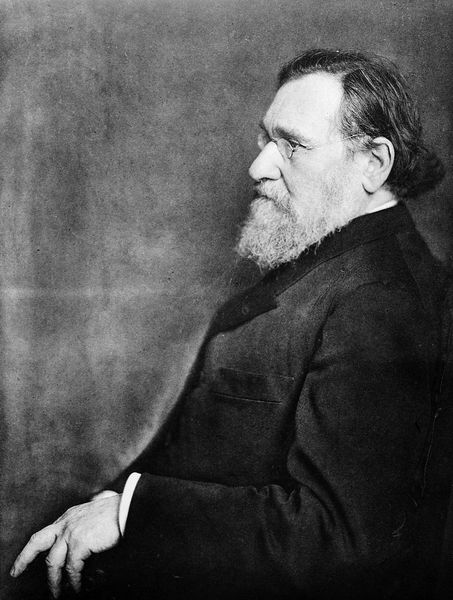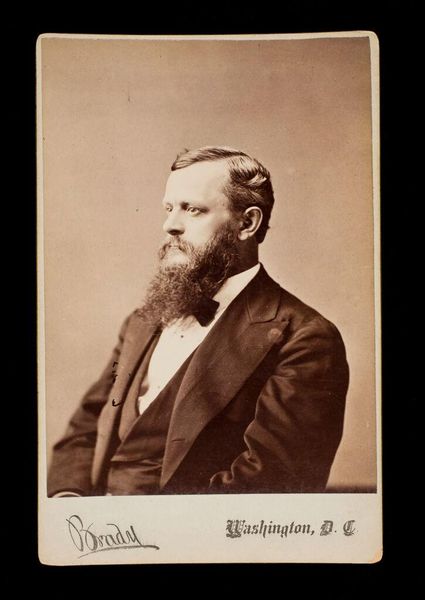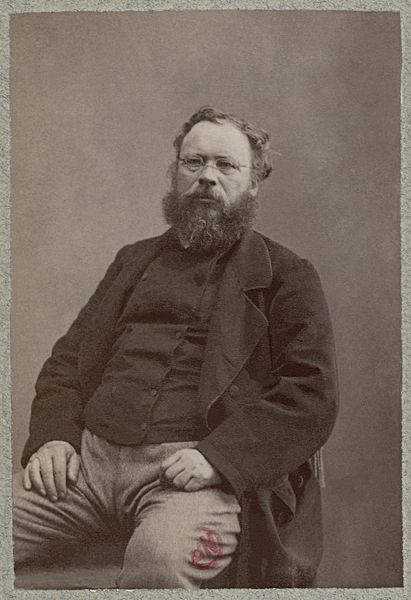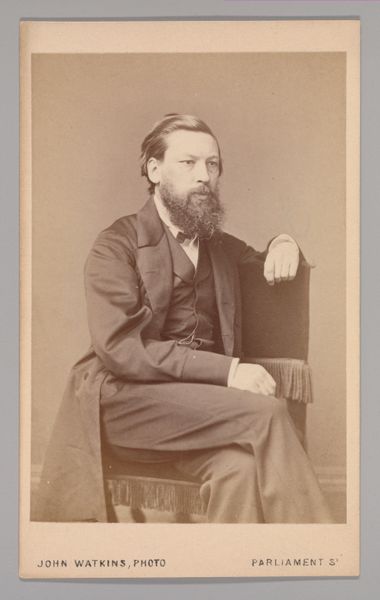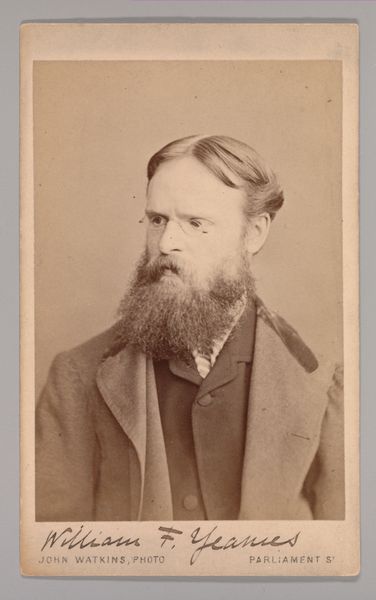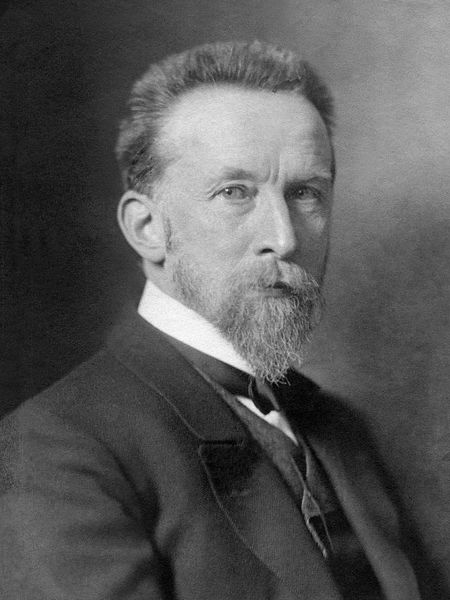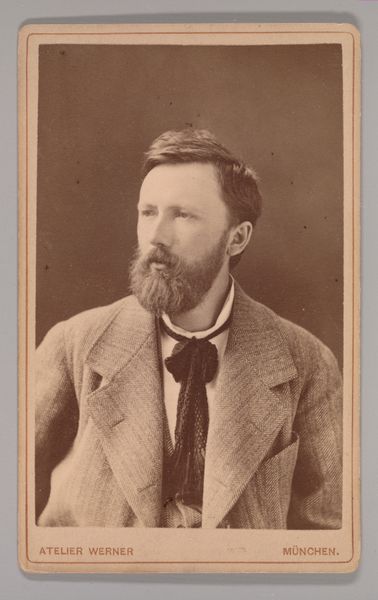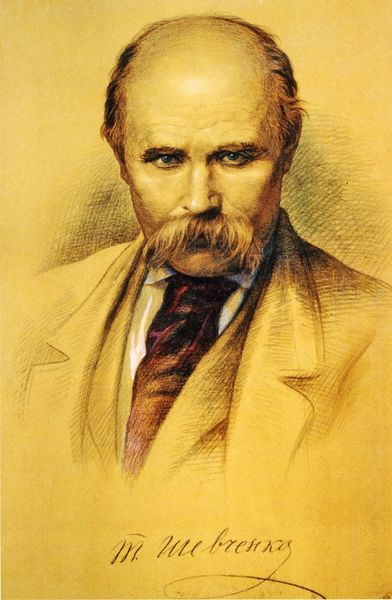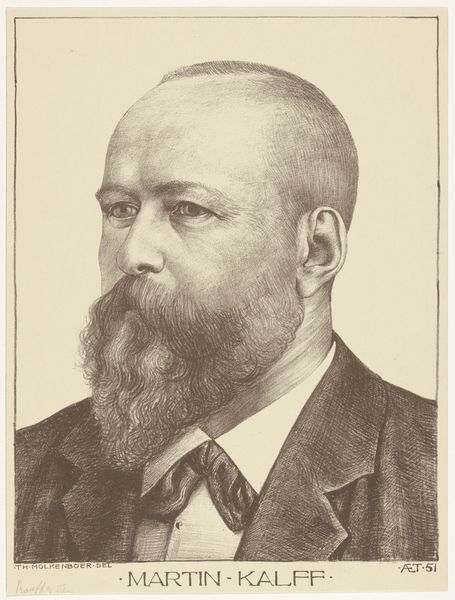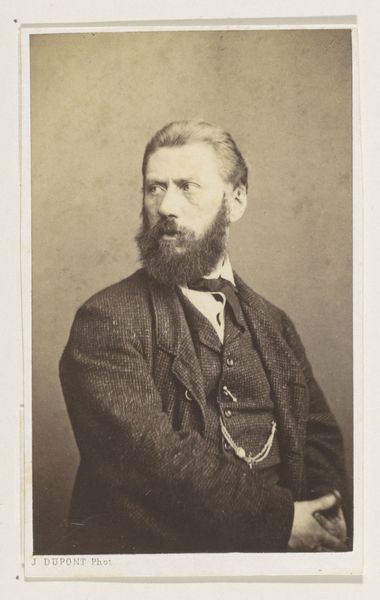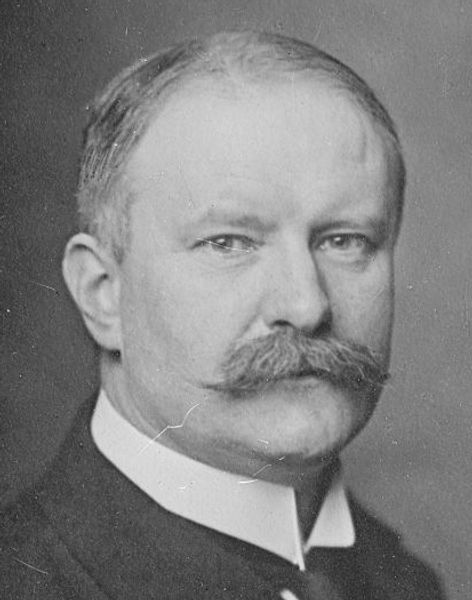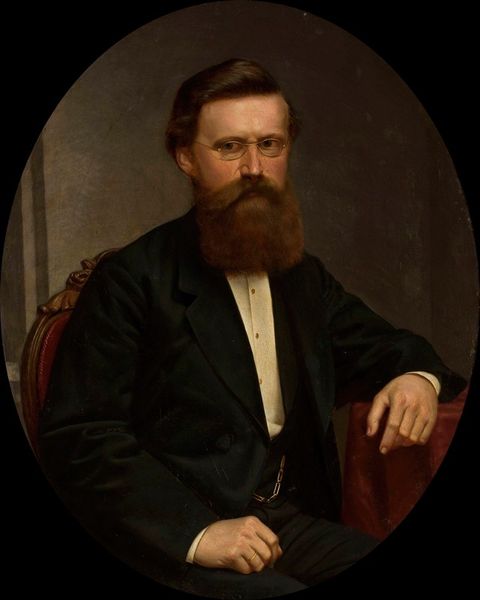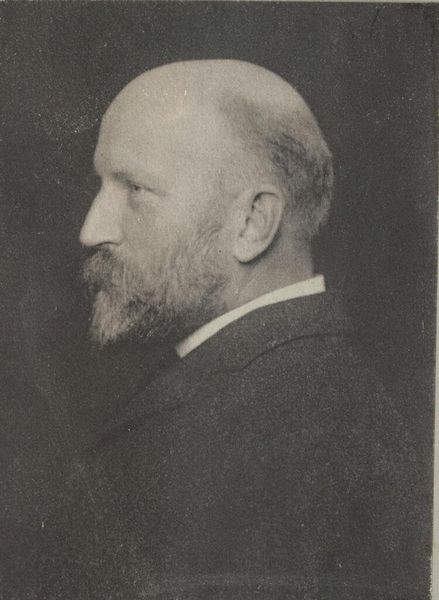
photography
#
low key portrait
#
portrait image
#
portrait
#
portrait subject
#
photography
#
male portrait
#
portrait reference
#
portrait head and shoulder
#
facial portrait
#
realism
#
celebrity portrait
#
digital portrait
Copyright: Public domain
Editor: This is a photographic portrait of Franz Metzner, taken in 1919 by Nicola Perscheid. There's something very serious and solid about this man; his gaze is very direct, and the tones are quite somber. What do you see in this portrait? Curator: Well, situating this image within its historical context is key. Post-World War I Germany was a hotbed of social and political upheaval. How might Metzner, as a sculptor, be positioned within the debates swirling around national identity and artistic expression during that period? I wonder if you feel some anxiety radiating from him. Editor: Anxiety? I guess I saw it more as just sternness. How do you see that period reflected in the photograph itself? Curator: Look at the realism; there's no romanticizing here. Perscheid captures Metzner with an unyielding intensity. Is this realism a deliberate move away from pre-war idealism, a stark portrayal of a man burdened by the weight of history? The severe style may show the trauma of war times, the search for true male identity. Editor: That’s a fascinating reading. I hadn't considered the angle of trauma. So, the lack of idealization becomes a statement in itself. Curator: Exactly. Also, think about the role of portraiture itself. Who gets memorialized? Why? What does it mean to capture a man of Metzner’s stature during this time? Consider the photographic process itself: who controlled the narrative of representation? How might power dynamics between sitter and photographer affect our reading today? Editor: It’s amazing how much is going on beneath the surface of what seems like a straightforward portrait. I will think of those dynamics moving forward. Thanks! Curator: Likewise, it highlights the power of photography to reveal hidden aspects of the past. Always question representation, its purpose, and its biases.
Comments
No comments
Be the first to comment and join the conversation on the ultimate creative platform.
